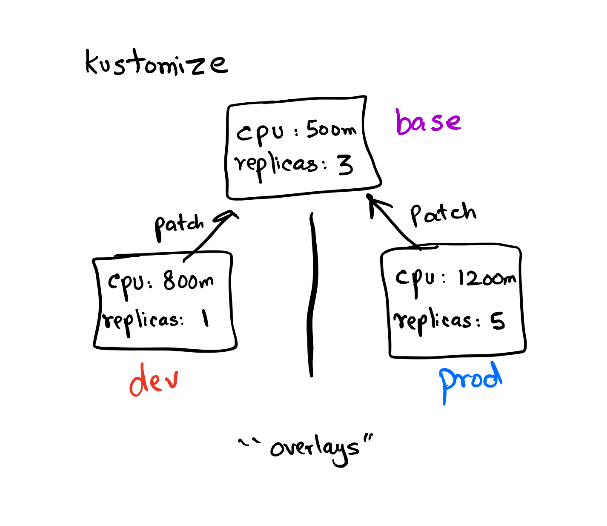Kustomize the Manifests
So far we have learned how to use kubekutr to write our base manifest files. We will need kustomize to customize the base YAML files generated by kubekutr in a template-free format.
Why Kustomize
In the previous section, we explored kubekutr to create manifests from scratch. However, when we do deployments across multiple environments there are cases where some things need to be changed based on the environment. For eg, in a local K8s cluster, since there's no cloud provisioner to create a LoadBalancer service, we need to change it to a ClusterIP or NodePort. Or if you've configured to run 10 replicas of your pod to serve high traffic with higher resource limits, but you need to change these variables in a local setup.

kustomize helps us with that in a template-free manner. There are no ugly if-else in our templates (conditionals in templates are bad) which also makes the output of these templates as K8s native. kustomize takes the approach where we basically combine the base and apply patch to create a variant.
For eg, we created base using kubekutr which provides a starting point for any further configurations. Then based on the environment (dev/staging/prod) we create overalys. In these overalys, we again specify the things to be changed referencing a base called patches. The changes are applied on top of the base and the resultant output is called a variant. So if we create 3 overlays referencing the same base we get 3 variants to deploy based on the environment. This approach helps us to keep the base as clean as possible and only fiddle with the values that change across environments.
Let's proceed to write our first kustomization.yml file!
Create kustomization.yml file
Create a file kustomization.yml which represents the config for kustomize to build resources etc.
# vim base/kustomization.yml
resources:
- listmonk/app-deployment.yml
- listmonk/app-service.yml
- listmonk/db-statefulset.yml
- listmonk/postgres-service.yml
First, we'll collect the resources used to build our base. These files are generated by kubekutr and we are just aggregating the resources so that when kustomize build runs, it parses all of these resources.
Note: As mentioned earlier,
kustomizetargets the root of the directory wherekustomization.yamlis present.
You can see the manifest generated with:
kustomize build base
Now that we have built our inventory for the resources required to deploy listmonk, let's proceed to create an overlay for our base deployment here.